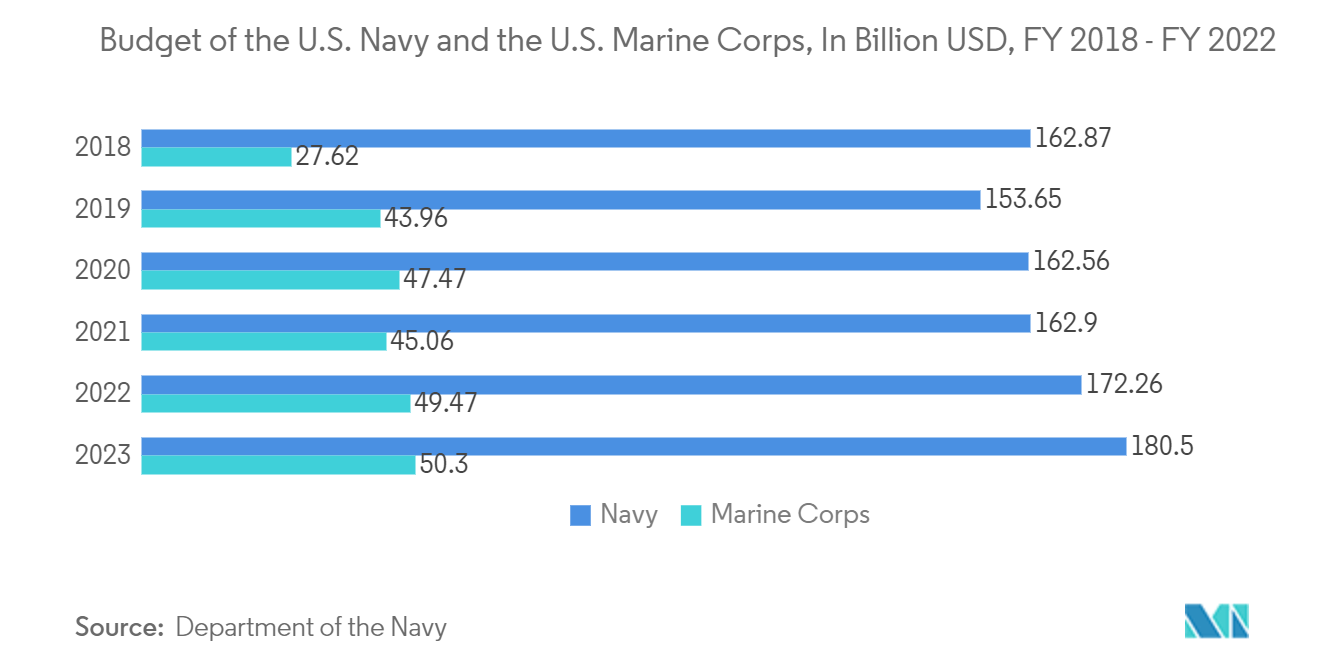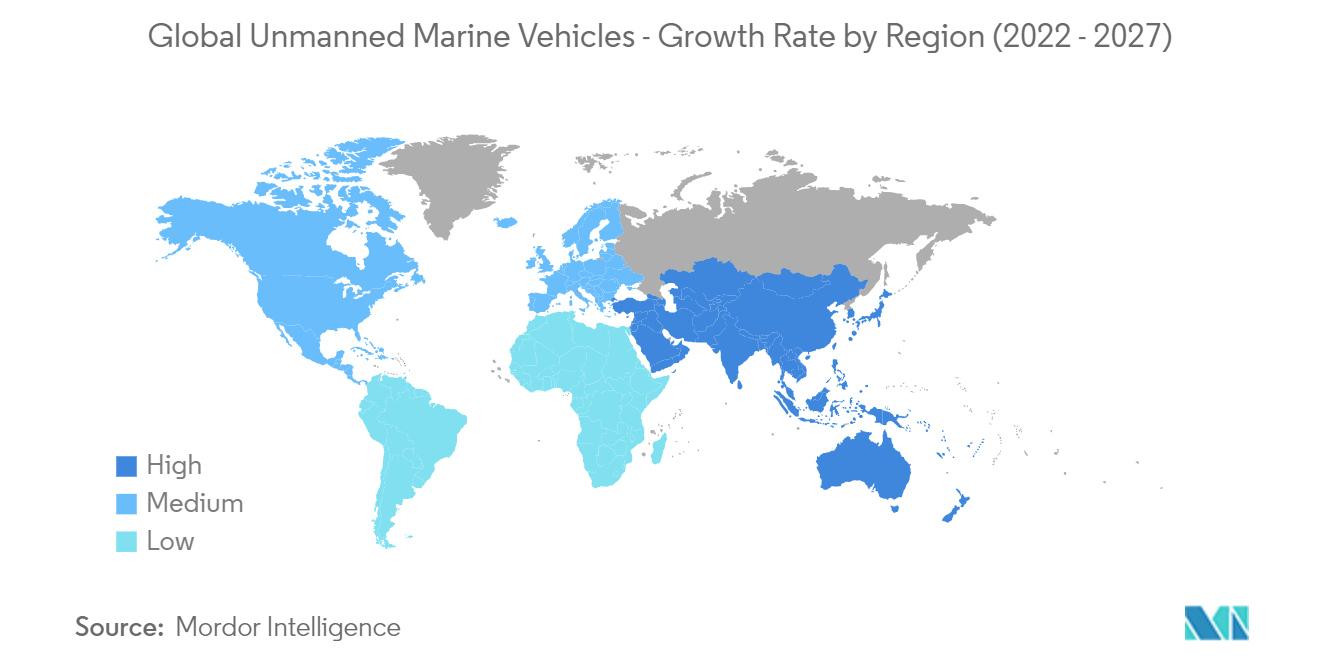Market Trends of Unmanned Marine Vehicles Industry
This section covers the major market trends shaping the Unmanned Marine Vehicles Market according to our research experts:
The Defense Industry is Expected to Grow Significantly in the Market
- The Navy and Defense departments are increasingly investing in the use of unmanned surface vehicles (USVs) for various missions and applications. The autonomous underwater vehicles (AUVs) and remotely operated vehicles (ROVs) are often designed to be deployed for intelligence, surveillance, and reconnaissance (ISR) operations, apart from being used for mine countermeasure (MCM) operations and anti-submarine warfare (ASW).
- The primary defense forces across the world are experiencing maritime security threats such as torpedo threats, underwater mines, diesel-electric submarine attacks, and short-range anti-ship missiles, which is driving the market by gearing more of its investments toward autonomous, robotic platforms that operate at sea and depths well below the surface.
- The robotic platforms are designed to accomplish specific tasks, such as identifying and neutralizing potential underwater threats. The successful completion of these missions depends on the peripheral subsystems, which provide location awareness, accurate positional information, and target guidance, such as positioning beacons and tracking systems.
- In December 2020, Turkey announced the launch of its first armed unmanned maritime vehicle (SIDA), which will be operated remotely using artificial intelligence systems. The vessel is expected to contribute to the country's defense network, especially in the troubled waters of the eastern Mediterranean, where Turkey's sovereignty rights have come under threat from countries like Greece and France.
- Moreover, in March 2021, the Navy and the Marine Corps published the Unmanned Campaign Framework to guide their investments in and integration of unmanned platforms in the United States. Further, increasing investments in strengthening the navy and the country's defense systems shall aid in developing the demand for unmanned marine vehicles for defense purposes.
- Various companies are making efforts to get unmanned marine vehicle contracts from the defense industry. This is also resulting in the growth and development of the market. In August 2022, Leidos was announced to have been selected by the U.S. Naval Sea Systems Command (NAVSEA) for designing and building a medium-size unmanned undersea vehicle. The cost-plus-fixed-fee contract holds an approximate value of USD 358 million.

Europe is Expected to Witness Significant Growth Rate
- Europe is gaining market growth due to the defense and commercial sector demand. The ASV marine system is a rapidly growing United Kingdom Industry. The United Kingdom's Maritime Autonomy Surface Testbed (MAST), which is an unmanned surface vessel (USV) inspired by the innovative BLADERUNNER hull shape, has already undergone trials in the Tidal Thames. With the help of research funding from the Defense Science and Technology Laboratory (Dstl), MAST was developed by Portchester-based ASV Ltd to provide a testbed to host multiple new technologies.
- Also, in May 2021, the German Federal Ministry for Economic Affairs and Energy announced facilitating EUR 12.0 million for the Maritime Research Program to develop a novel autonomous submersible robotics system. The technology is expected to enable autonomous monitoring of underwater installations in the deep sea with a significant carbon footprint reduction without costly support vessels. The funding decision was announced to the project's nine participants in the CIAM (Cooperative Development of a Comprehensive Integrated Autonomous Underwater Monitoring Solution).
- The NATO Centre for Maritime Research and Experimentation, located in La Spezia, Italy, has invested steadily to advance the technology of UUVs for military applications like MCM and antisubmarine warfare (ASW). CMRE is currently investing in helping warfighters get a clearer picture of what lies in the depths below, with the help of the fleet of unmanned vehicles that can communicate and cooperate with each other.
- In the case of the maritime environment, as the prime focus of combat has evolved from ocean to coastal areas, it is getting difficult for the existing naval forces to operate in shallow waters effectively. Therefore, unmanned underwater vehicles (UUVs) are being required by European nations such as France at an increasing pace.
- Along with industry and international partners, the Royal Navy has created an opportunity for engineers and scientists to demonstrate the technology during the Unmanned Warrior Event and explore the ideas to implement in the future of naval warfare. It is linked with the regular Joint Warrior Fleet Exercise and aims to test systems in an operational environment.


